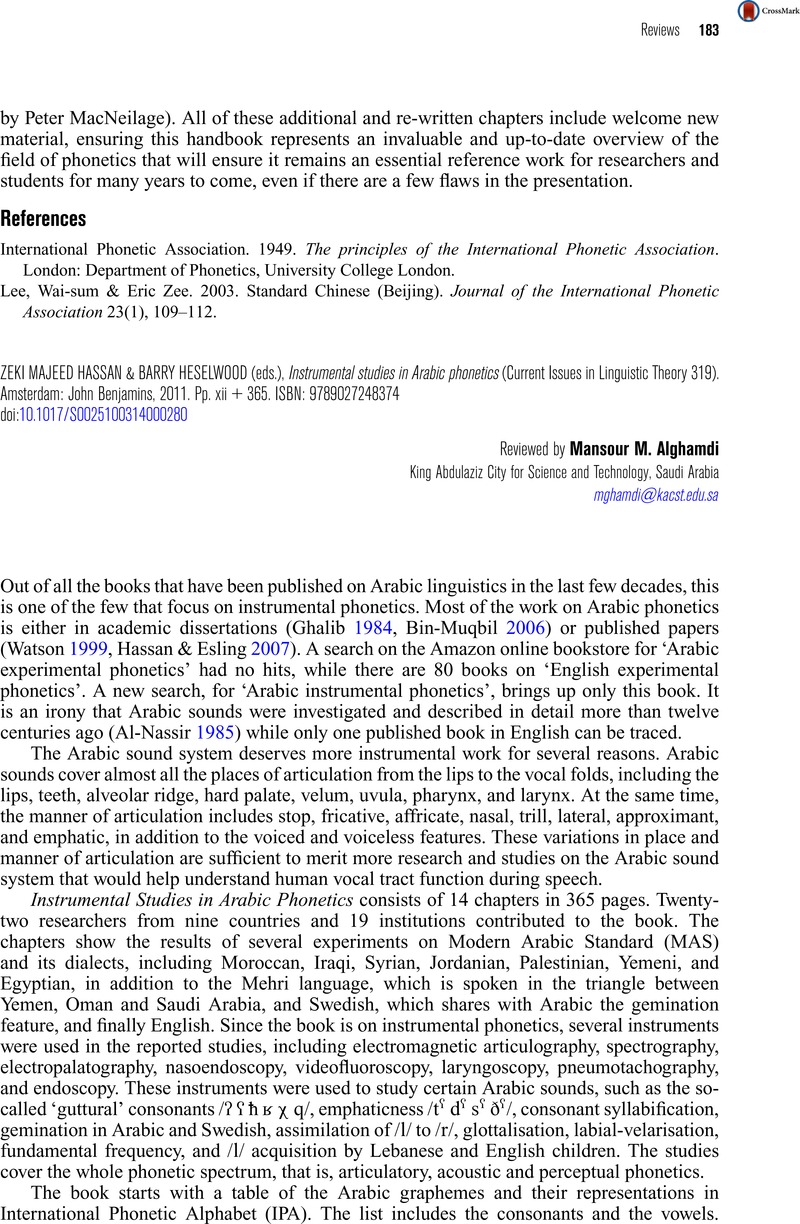Hassan, Zeki Majeed &
Esling, John H..
2007. Laryngoscopic (articulatory) and acoustic evidence of a prevailing emphatic feature over the word in Arabic.
16th International Congress of Phonetic Sciences (ICPhS XVI), Saarbrücken, 153–158.
Google Scholar 